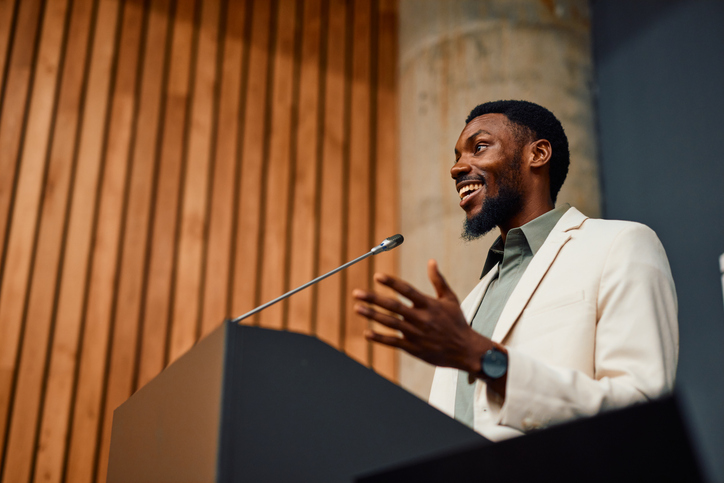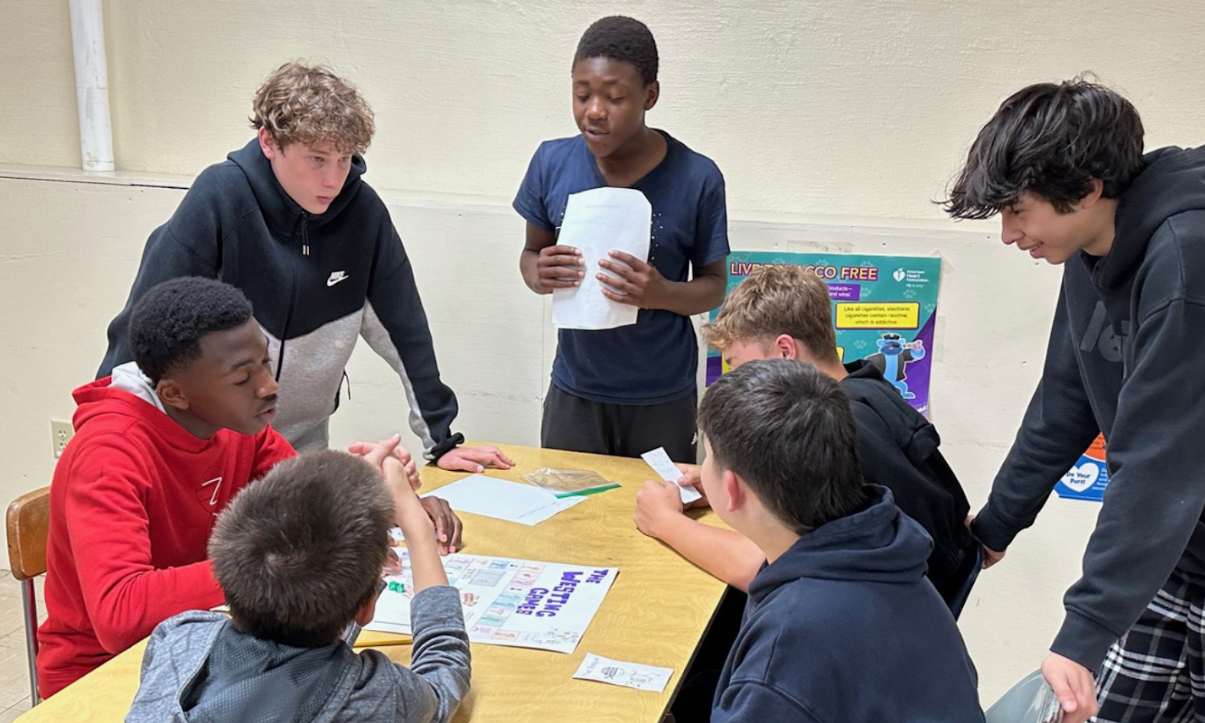The 2-Minute Story That Saved My Career: How Storytelling Can Be The Most Effective Form of Feedback
By harnessing the power of story, school leaders can create a culture in which feedback is embraced as an essential ingredient for growth

I was a brand new assistant principal with energy and passion, and suddenly, everything turned against me. I had one of my roughest patches, felt unsupported by those above me, and questioned by those I supervised why I wasn’t doing enough. It was one of those exasperating moments that had me driving home aggravated, tired, and rethinking my administrative career, wondering if my leadership was broken.
My next interaction changed everything. A veteran, proven principal called me and said, “I heard you had a rough day….” “Yes,” I shot back. He countered, “I can remember the first time I had a day like that. Parents screaming at me, my principal demanding answers, and that group of teachers in the background heckling the new guy. I was scared. I know what it’s like. Hang in there, it gets better, and you are doing great.”
The message contained in that small story gave me exactly what I needed. Suddenly, my mindset shifted. Looking back, I remember feeling different parts of my brain engaging. I wasn’t alone and I received validation from a leader with respect. My energy returned and I was ready to get up off the mat.
It was just a 2-minute interaction. Often, that’s all it takes to embrace leadership challenges, work toward improvement, and most importantly, move on.
School leaders who use storytelling, big and small, can deliver constructive feedback by focusing on shared experiences, contextualizing issues, and building trust, just as that wise sage did for me years ago.
Unlike conventional methods more commonly used that can sometimes feel like a personal attack, stories frame feedback as a common understanding and a collaborative effort toward a collective goal. This technique is relevant for both teachers providing feedback to students and administrators giving it to faculty.
The concept described by psychologist Emily Falk of providing feedback through stories offers a powerful mechanism for school leaders and teachers to bypass the recipient's instinctive urge toward defensiveness and promote a positive direction for change–a change like I experienced decades ago that helped me sustain a long and rewarding career as a school leader.
Tools and ideas to transform education. Sign up below.
Why Do Comments Hurt and How Does Telling Stories Work Around That?
Defensiveness often arises because the brain combines "what is me" with "what is good," causing feedback or criticism to be perceived as a threat to one's core self-image or identity. Direct appeals to change behavior frequently lead to this defensive reaction.
The Storytelling Approach
Sharing stories is effective because it seems to get around our defensiveness. When information is presented in a story form, people reason about it differently than if it were presented as a list of facts or a direct critique.
Here’s more of why and then how to implement it with success in your school leadership work.
1. Transportation and Distancing: Listening to a story pulls us out of a defensive mode (the "do I agree or do I disagree?" mindset) and into a thoughtful, observant framework. Being transported allows the individual to identify with others in a way that is different from experiencing the situation for themselves. It's a third-person, objective mindset, a safe zone for people to evaluate a situation from.
2. Shifting Perspective: When individuals consider challenges from the perspective of someone who is not them, it dramatically alters their thinking. They gain the latitude and freedom to consider the available options without feeling personally attacked. That wise sage did this when he shared his story of struggling. Making it safe and helping me to see him as having an objective, difficult experience is why when I was able to take the perspective of a distanced other. It became easier to think about the situation in a wiser way and come up with a better solution.
3. Engaging Different Brain Systems: Fundamentally different pathways are triggered when processing stories compared to facts. Storytelling engages social relevance brain systems–those that help us understand what other people think and feel, such as empathy, another higher order processing mechanism.
Delivering Effective And Actionable Feedback With A Story
Feedforward instead of feedback can be implemented by using stories to focus on future potential instead of focusing on past mistakes. Rather than, "Your lesson on fractions was confusing," a leader could use a narrative approach: "Last year, a teacher was struggling with a similar topic. She found that adding a hands-on activity, such as using props to represent fractions, made a huge difference. What are your thoughts on trying something like that in your next lesson?" This is also much more specific than simply stating it’s “confusing.”
Give context and humanize the process. Stories provide a backdrop for a new initiative or process, helping people understand the "why" behind a change. A leader might tell a story about a student who was almost lost in the system to explain the need for new student tracking protocols, rather than presenting the new policy as a top-down mandate. This personalizes and leans into an educator’s care for children.
Connect to a shared purpose. A story can remind staff of the reason we teach children, linking individual performance to the larger goal of student success. This helps make constructive feedback feel less personal and more like a team or collective effort.
Examples Of Using Story For Effective Feedback
For teachers:
- Personal anecdotes: A teacher can tell a story about how they struggled with a concept as a student and how a particular strategy helped them. This connects them with the student on a human level and safely clears a path forward.
- Real-world scenarios: To give feedback on group collaboration, a teacher could create a story about a fictional group of students who face and overcome a similar challenge. This allows students to discuss solutions in a low-stakes way before applying the lessons to their own group dynamic.
- Introducing a fictional scenario: Teachers can use narrative techniques to address behavioral issues, which often stem from immediate emotional states, similar to how Falk used stories with her own defensive children. The teacher can introduce a story about characters dealing with a similar conflict, such as fighting over a toy or turns.
For leaders:
- Success stories: Sharing a success story about a teacher who embraced constructive feedback and saw positive changes can inspire others to do the same. This moves feedback away from being a negative experience and positions it as a pathway to achievement.
- Staff reflection narratives: Instead of relying solely on formal evaluations, a leader might ask teachers to submit a narrative reflection on their own practice. This empowers them to identify areas for growth themselves and can make the feedback discussion more collaborative.
- Framing feedback as a scenario: Instead of saying, "Your lesson planning is disorganized," which threatens the teacher's professional identity, a leader could relate an experience of personal nature or of a previous successful colleague who faced logistical challenges but demonstrated mastery and skill to develop into an excellent teacher. Not unlike the principal who took 2 minutes to give me a lifeline, this propels and invigorates while helping others see where they can grow. That’s a win.
By harnessing the power of story, school leaders can create a culture in which feedback is not feared, but embraced as an essential ingredient for growth, building empathy, and helping every member of the school community reconnect with the shared purpose of teaching and learning. School leaders can model for faculty so everyone in the school community can learn to tap storytelling to teach and grow productively, rather than shy away in defensiveness.
Enjoy our content? Make sure to add Tech & Learning as a preferred source on Google to keep up with our latest news, how-tos, profiles, events, and more.
Dr. Michael Gaskell is Principal at Central Elementary School in East Brunswick, NJ, has been published in 75 articles, and is author of three books: Radical Principals, Leading Schools Through Trauma (September, 2021) and Microstrategy Magic (October, 2020). Mike provides current guidance on AI, presents at national conferences, including ISTE (June 2023) The Learning and the Brain (November, 2021), and FETC (January 2025; 2024: 2023, and 2022); and works to find refreshing solutions to the persistent problems educators and families face. Read more at LinkedIn
